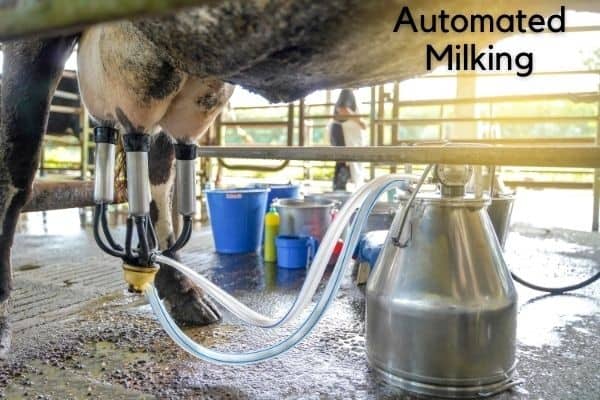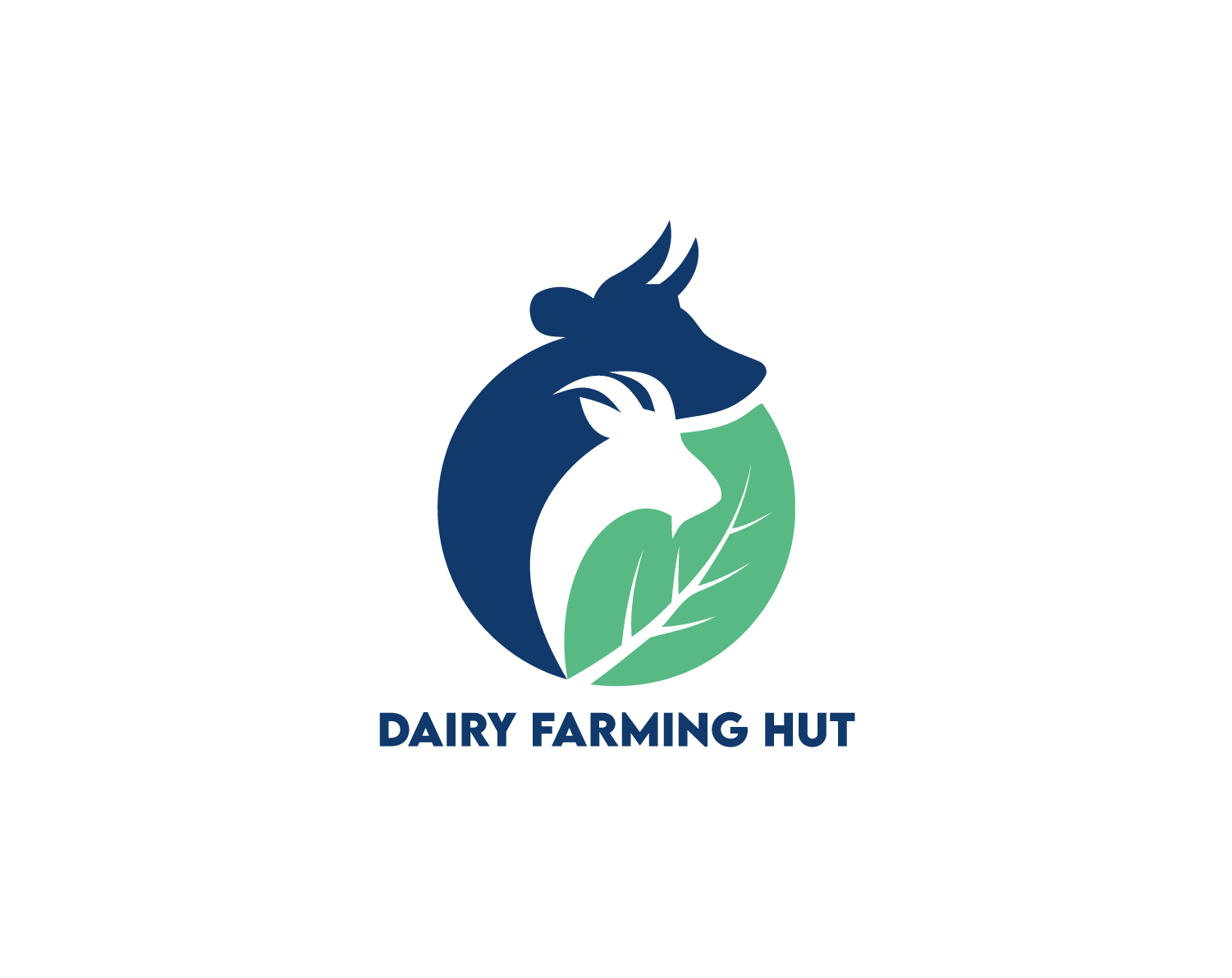Cows are some of the animals that are farmed intensively, worldwide. In 2020, the average number of cows farmed at any point in time is around 957.51 million.
They are farmed for milk meat and, believe it or not, manure. An average of 270 millions are farmed for milk.
The way the cows are cared for, the level of stress they are exposed to, the food they eat, and the level of pollution in their environment, all influence the quantity, quality, and taste of their milk.
So, How much milk does a cow produce in its lifetime?
On average, a cow yields 7.5 gallons of milk every day. They produce milk only after having a calf and they are able to do this at around 2 years of age. They stop producing milk when the calf is 10 months, but they soon deliver another one and the process starts over again. This cycle can be repeated just a few times, so the average cow that lives on a farm can only produce milk for 4 years before being slaughtered.
How Many Gallons of Milk Does a Cow Produce in its Lifetime
Even if cows have a life expectancy of up to 20 years, due to their decreasing milk production as they age, it is not financially worth feeding them for so long. So, a cow that is farmed for milk will produce around 10,950 gallons of milk during its lifetime.
Factors Affecting Amount of Milk Production in Dairy Cows
This amount can differ according to many factors. Among which:
Cows have been around, as domestic animals, for over 10,000 years, and ever since we domesticated them, we used their milk in our alimentation. During their time, throughout history, cows were mostly farmed to suit the needs of a family. It was only recently that cow farming became an industry, and the question about "how much milk does a cow produce in its lifetime" became an issue.

Later on, cows began to be farmed on a larger scale for their milk to be sold or exchanged for other essential products. Thus the demand for their milk increased.
Also Read: How Much Milk Does a Goat Produce Per Day?
Factors Affecting Milk Quality in Dairy Cows
After the industrial revolution, cows started to be farmed extensively, and their milk production was artificially increased by milking techniques and by breeding them artificially and as often as possible. This has decreased their lifetime and the quality of the milk produced.
However, this strategy increased the milk production of a cow quickly and has led to high productivity and profit.
A cow that would produce milk only for its calf would produce no more than a gallon of milk. Cows, like all mammals, produce milk “on-demand,” meaning that the more they are milked, the more milk they produce. Of course, there is an upper limit, and industrial farmers tend to reach it.
A cow that is farmed by a rural family and it’s milked manually produces enough for the needs of that particular family. Still, this quantity doesn’t usually mean more than two gallons every day, and this includes the milk for her calf.
Cows that are farmed by families for their own use usually have a longer life span, and it produces milk for a few more years before being slaughtered. The quality of this milk tends to be higher because the cows need less energy to produce a smaller amount of milk, and they are not pushed to their milk-producing limit.
Another factor for which the milk produced in small family farms is of higher quality is that most of the time, the cow is allowed to live with her calf, leading to a naturally high oxytocin level.
Oxytocin is a hormone that is produced when mammals breastfeed. It regulates milk production and relaxes the animal. A cow that isn’t stressed will produce milk of higher quality.
Furthermore, in an industrial setting, cows will be artificially inseminated soon after delivering their calf while on a small farm they would most likely breed every two years. Repeated pregnancies followed by intensive milking lead to great strain on the cow’s body, meaning that the milk quality will suffer and the nutrients in the milk will be affected.
Effects of Cows Feed on Milk's Quality and Quantity
Cows raised in industrial usually receive commercially made feeds, which contain various nutrients and vitamins, well mixed to prevent the cow from choosing only the bits that taste better.
The food's content is adjusted according to the breed of the cow, the quantity of milk that it’s expected to yield, the season, the age, and other important factors usually decided by a veterinarian or another specialist.
Cows that aren’t farmed in an industrial setting receive much more varied nutrition. Depending on the season, and capabilities of the farmer, the cows might receive a combination of cereals, hay, and other dried ingredients that add to their ration.
Free-range cows are allowed to roam outside, and they get to choose the grass and plants they like to eat. These cows will yield the highest quality of milk that is tastier and richer in fat.
The cow’s digestive system is exceptional because one of the most interesting evolutive acquisitions was the development of the rumen microbiome. The rumen is the first chamber of the cow’s digestive system, and there is a multitude of bacteria and fungi that live in it. These have the capability of pre-digesting fiber and carbohydrates so that the cow maximizes nutrient absorption. This process allows cows to live on food of terrible quality while still producing milk. However, the quality of the food still reflects in milk production and its quality.
Depending on what nutrients a cow receives, the milk can have different protein, fat, carbohydrate, vitamins, and mineral contents—all of these influence the taste and consistency of the milk that a cow yields.
Cows Breed and Its Influence on Milk Production
Much like dogs, cows were genetically manipulated and selectively bred to change their characteristics. Some breeds are created for their meat and some for their milk. This means that cows of different races yield different types of milk, and a cow that is farmed for its meat would have milk of lower quality.
Usually, cows that are bred for their meat aren’t allowed to reproduce more than once, and they will not be milked because this lowers the quality of the meat.
Each breed has different particularities, but the Holstein yields, by far, the largest quantity of milk in one year, producing up to 8648 gallons in 365 days.
Final Thought
Farming cows for dairy or meat has made food readily available for us. This may well be a reason that has influenced the evolution of human society and introduced food diversity.
The quantity of milk production in cows depends on many factors, as you have already read in this article. The key elements for better milk yield are cows' comfort and health. The healthy cow will eat better and eventually produce more milk. It is advisable to increase feed quality after calving and provide essential vitamins. Dry fodder also helps in increasing the milk yield.
Faq
The standard cow in the U.S. produces on average 128 glasses of milk daily.
The average cow produces almost a grand total of 40,000 glasses of milk per year!
It’s estimated that the average herd size for dairy farmers in the U.S. is around 200 cows.
